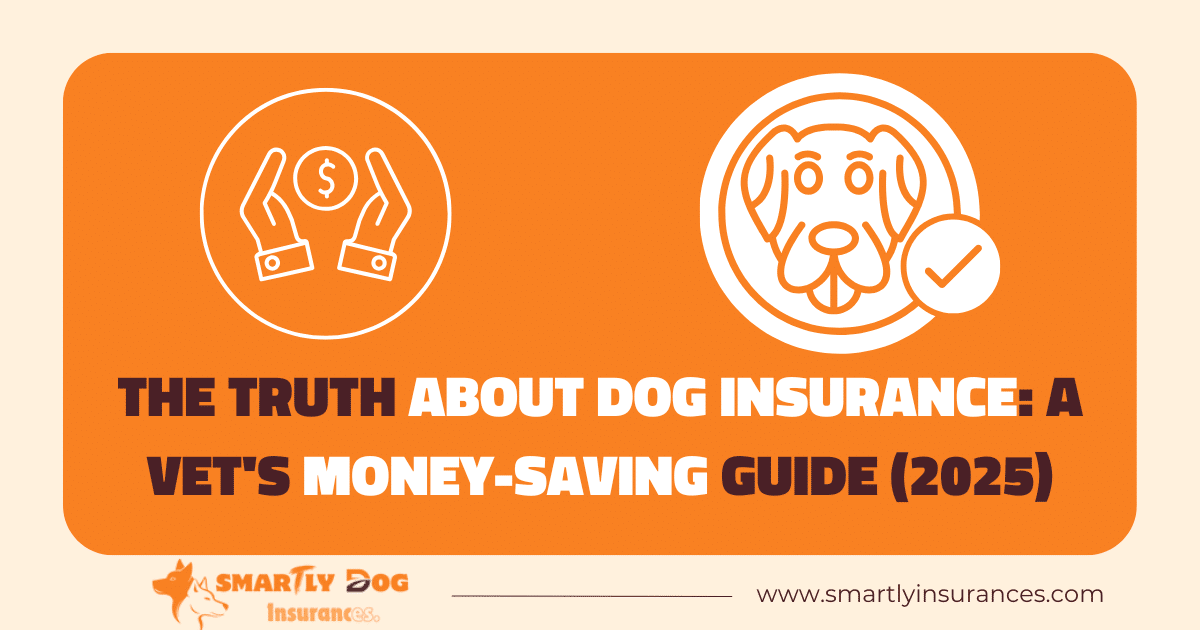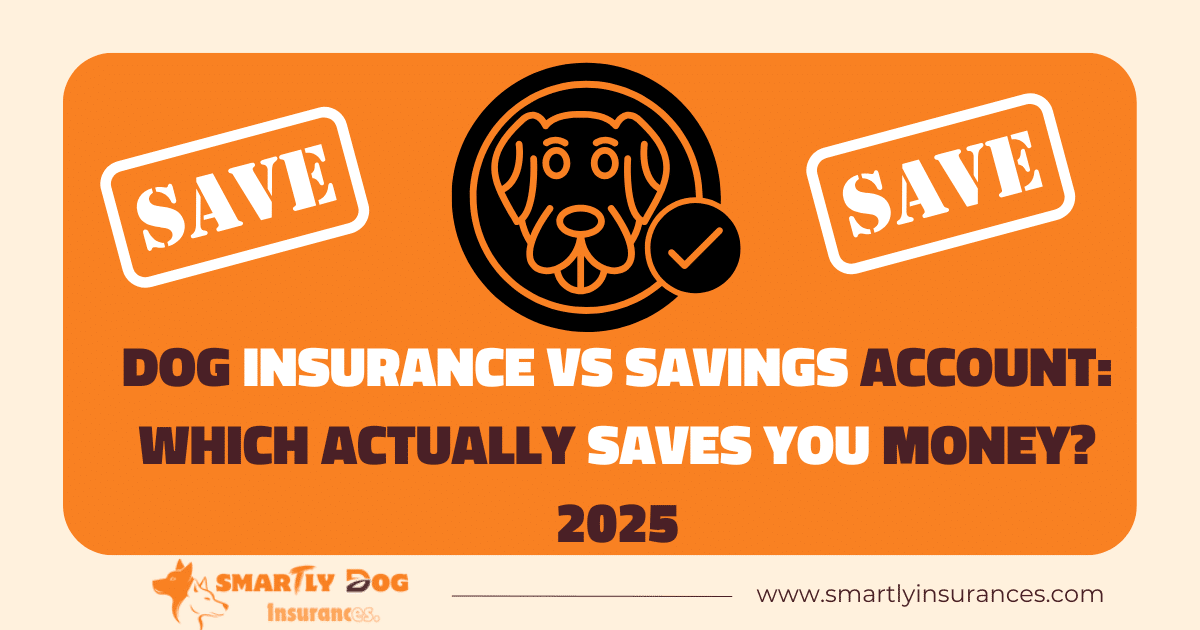One out of every three pets needs emergency treatment each year. These unexpected vet bills can range from $800 to $1,500 or more. Pet owners often ask me about the value of dog insurance when they face these surprise costs.
Pet parents spent an average of $1,515 on their pets in 2023. Yet 45% of dog owners weren’t ready for these pet-related costs. The pet insurance world has changed by a lot. More than 5.6 million U.S. dogs and cats now have insurance coverage. This number has doubled since 2019.
This piece will help you decide if pet insurance makes sense for your situation. You’ll learn about coverage options and actual costs. We’ll get into the real benefits of pet insurance that will help you make a smart choice for your furry friend.
Understanding Dog Insurance Basics
Pet insurance comes in three different types that serve various needs and budgets. My experience as a vet shows how dog owners make better healthcare decisions when they understand these options.
Types of dog insurance policies
The most complete option is the accident and illness coverage that handles unexpected injuries and disease treatments. This coverage has hereditary conditions, alternative therapies, and behavioral problems.
The second type, accident-only coverage, we used for emergency situations like broken bones, bite wounds, and swallowed objects. It also tends to be easier on the wallet and stays accessible to more people for older pets who might not qualify for complete coverage.
Wellness plans work differently and serve as add-ons to your main policy. These plans cover routine care costs like vaccinations, dental cleanings, and annual check-ups.
What’s covered and what’s not
Pet insurance usually covers prescription medications, surgery, diagnostic tests, hospitalization, and emergency care. Most complete plans have treatment for:
- Cancer and chronic conditions
- Dental injuries and disease
- Behavioral problems
- Alternative therapies
- Hereditary conditions (depending on the policy)
All the same, some exclusions apply to most policies. These include pre-existing conditions, cosmetic procedures, and breeding costs. Most policies need waiting periods, generally 10-30 days, before coverage begins. Pure-bred dogs face higher premiums than mixed breeds because they’re more likely to develop inherited medical conditions.
These simple details help you determine if pet insurance makes financial sense for your dog. Your pet’s age, breed, and budget will guide you to the right choice.
When Does Dog Insurance Make Financial Sense
Dog breeds and specific health conditions make pet insurance a smart financial choice. My experience as a veterinarian shows how breed-specific health risks and age-related factors shape insurance decisions.
High-risk dog breeds
Dog breeds with higher insurance premiums face specific health risks. Here are some breeds that need extra attention:
- Akitas and German Shepherds (prone to hip dysplasia)
- English Bulldogs (susceptible to breathing issues)
- Doberman Pinschers
- Rottweilers
- Siberian Huskies
Common expensive treatments
Major veterinary procedures can hit your wallet hard. Pet insurance becomes valuable because gastrointestinal surgeries cost between $3,000 to $7,500. The average canine surgery ranges from $500 to $7,000. Some procedures like total hip replacements and IVDD surgeries can reach up to $10,000.
Age and health factors
Many people believe older dogs need insurance most. The truth is younger pets benefit from early coverage. Puppies and kittens need more emergency care. Their natural curiosity and developing immune systems put them at risk. Early health issues can lead to lifelong medical needs.
The right time to get insurance matters. Most pet owners get coverage within six months of adoption. This works well since no pet insurance plans cover pre-existing conditions. Insurance costs go up as pets age. Senior pets face more health issues.
Pet insurance makes sense when yearly vet costs could exceed $1,200 to $1,400. Emergency care costs range from $150 to $5,000. Your first year with a puppy includes vaccinations and preventive treatments. These costs add up to $470 to $890. Getting insurance early proves practical.
Real Cost Breakdown of Dog Insurance
Let’s talk about the real costs of dog insurance to help you make better decisions about coverage. The numbers that affect your insurance expenses are worth breaking down.
Monthly premium factors
Dog insurance with accident and illness coverage costs about $56 per month. Your premium costs will change based on several things:
- Where your pet lives (city or countryside)
- Health risks linked to specific breeds
- Your dog’s age
- Gender (male dogs cost more to insure)
- Coverage type you pick
Basic accident-only coverage runs about $17 per month. You’ll pay between $36 to $101 monthly if you want complete coverage with unlimited yearly benefits.
Deductible options
We looked at how deductibles affect your monthly payments and what you pay from your pocket. Most insurers let you choose deductibles between $50 to $2,500. A higher deductible means lower monthly premiums but you’ll pay more upfront when you need care.
You could save about $20 per month by picking a $500 deductible instead of $200. The savings jump to $35 with a $1,000 deductible.
Some companies offer special deductible plans. Trupanion and TrustedPals give you $0 deductible options, though you’ll pay more each month. Family plans might let you cover three pets under one deductible.
The sweet spot lies between monthly premiums and out-of-pocket costs. A plan with 80% reimbursement, $5,000 annual coverage, and a $250 deductible usually costs $30 to $71 monthly. This gives you good coverage while keeping monthly costs reasonable.
Smart Ways to Save on Dog Insurance
Smart pet parents have many ways to cut their insurance costs while keeping quality coverage intact. You can save money by knowing about available discounts and making smart choices.
Multi-pet discounts
Insurance providers give great savings when you insure multiple pets. The discounts usually range from 5% to 10% per pet. MetLife has a special family plan where up to three pets can share a single deductible. The savings get better with more pets:
- 5% savings for two to three pets
- 10% savings for four or more pets
- An extra 10% discount comes with home or auto insurance bundles
Wellness plan alternatives
Wellness plans work differently from regular insurance. These plans cost between $20 to $50 monthly. When combined with standard insurance, they help you manage expected costs like annual exams, vaccinations, and dental cleanings.
Some providers take new approaches to wellness coverage. To cite an instance, Embrace offers a Wellness Rewards plan that gives you a $25 annual bonus for keeping your pet healthy. Some providers also reduce your annual deductible by $50 each claim-free year.
Choosing the right deductible
Your choice of deductible makes a big difference in monthly premiums. Going with a $500 deductible instead of $200 saves about $20 monthly. This jumps to $35 monthly with a $1,000 deductible.
Success comes from balancing out-of-pocket costs with monthly payments. Your financial situation and emergency savings should guide your deductible choice. A higher deductible might work better if you can handle unexpected costs, since it means lower monthly premiums.
How to Choose the Right Policy
Pet owners need to review their coverage options and policy terms carefully when choosing insurance. My experience as a veterinarian has helped many pet parents make this vital decision.
Comparing coverage options
You should look at several factors to review policies properly:
- Annual and lifetime coverage limits
- Reimbursement rates (typically 70% to 90%)
- Waiting periods for coverage activation
- Direct vet payment options versus reimbursement
- Breed-specific coverage limitations
- Age restrictions and associated costs
Insurance companies let you customize plans with different annual limits and deductible options. The reimbursement structure works on a percentage basis after you meet your deductible. Some insurers make payments directly to veterinarians, so you don’t need to pay upfront.
Reading the fine print
You must understand policy terms to avoid surprise coverage gaps. We focused on the benefit schedule that shows maximum payouts for specific treatments. You should also check claim expiration deadlines and coverage limits thoroughly.
Insurance policies need waiting periods before coverage begins. These usually last 14 days for general coverage, with longer periods for specific conditions. No treatment gets coverage during these waiting periods.
Watch out for exclusions, which usually include:
- Pre-existing conditions (though some providers cover curable conditions after a symptom-free period)
- Elective procedures like tail docking or ear cropping
- Specific breed-related conditions
- Dental care limitations
Some insurance companies offer features that set them apart. To name just one example, certain providers cover alternative therapies like hydrotherapy and chiropractic treatments. Coverage for prescription medications varies between providers – some offer full coverage while others have strict limits.
Finish
Pet owners need to think carefully about insurance as vet care costs continue to rise. My years of veterinary practice have shown how the right policy can save dog owners thousands during emergencies.
Your dog needs insurance while young and healthy. Pet parents who delay until health problems surface face limits on coverage due to pre-existing conditions. A good insurance plan costs between $30 to $70 monthly – nowhere near the cost of surprise emergency bills that can hit $5,000 or more.
The right policy depends on your dog’s needs. Look at your pet’s breed risks, review different coverage options, and choose a deductible that fits your budget. Higher deductibles mean lower monthly premiums but you’ll pay more when filing claims.
Pet insurance may look like just another bill, but it’s a great way to get protection during emergencies. The cost matters less than the security and financial safety it provides throughout your furry family member’s life.



